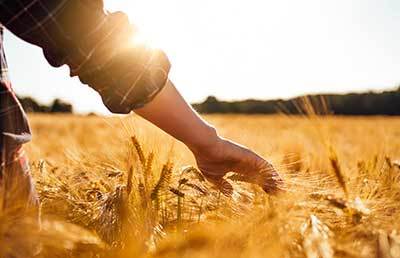Big Unknowns on Loan Forgiveness

We recently did a post on how loan forgiveness might be calculated when it comes to employee costs. This post deals with the other costs that qualify to be paid during this period and how that might affect forgiveness. There has been no guidance on any of this other than the actual law so we will surmise some of this and let you know what we really need guidance on.
First, there is a major question regarding the employee calculation. The law says we compare employee payroll compensation during the 8 week covered period (beginning the day after loan proceeds) to the 2020 first quarter payments for the same employee.
However, what happens if the employee quits on the second day of the covered period. Based on the current law, this seems to indicate that almost all of the payroll in the first quarter required for testing will reduce the loan forgiveness even though the farmer hired a new person to fulfill that roll. Here is an example:
Mary pays Steve $20,000 during January 1 to March 31, 2020. The required testing amount is $15,000. She receives a loan on May 1 for $30,000. On May 2 (the start of the 8 week covered period) Steve quits his job and receives one day pay of $200. The law seems to indicate that Mary will have $14,800 of her loan not forgiven even if she spends all of her loan proceeds on payroll costs.
Is this the actual intent of Congress even though Mary spent all of the proceeds on qualified payroll costs including hiring someone to do Steve’s job? We don’t know and need guidance from the SBA.
The law does allow the farmer to use loan proceeds for rents, interest on mortgages and utilities in place on February 15, 2020. But what does this mean for loan forgiveness. Even if a farmer spends money on these items, will it qualify for loan forgiveness? The law indicates that farmer can’t pre-pay any of these items to qualify for less forgiveness, but what happens when a farmer pays for an item that covers a full-year. Does this allow all of those costs to be included or do you have to back out the portion accrued before the state of the covered period? Here is an example:
Mary on May 10 makes a $50,000 mortgage payment on her farm. Interest is $10,000 and principal is $40,000. Only the interest qualifies but is it $10,000 or is $1,538 ($10,000/52*8) that qualifies. Right now we don’t know for sure.
These are two of the main questions that we have on forgiveness. It would be nice for SBA to give us some rules now so we know what and how to make qualifying payments during the covered period.
We will keep you posted.
Paul Neiffer is a certified public accountant and business advisor specializing in income taxation, accounting services, and succession planning for farmers and agribusiness processors. Paul is a principal with CliftonLarsonAllen in Walla Walla, Washington, as well as a regular speaker at national conferences and contributor at agweb.com. Raised on a farm in central Washington, he has been immersed in the ag industry his entire life, including the last 30 years professionally. Paul and his wife purchase an 180 acre ranch in 2016 and enjoy keeping it full of animals.

What happens if a farmer hasn’t filed their 2019 tax return yet? Would they use 2018 SE schedule for their PPP or should they get 2019 filed ASAP?